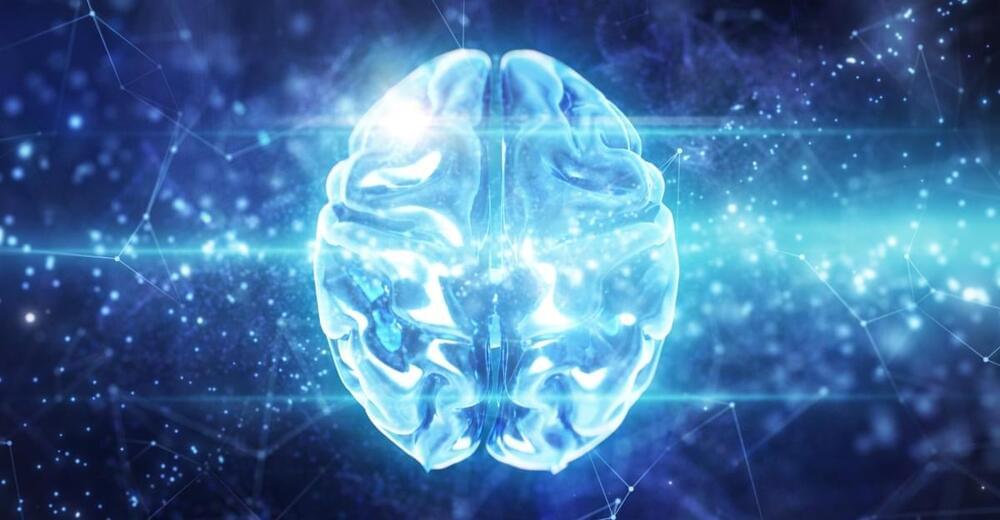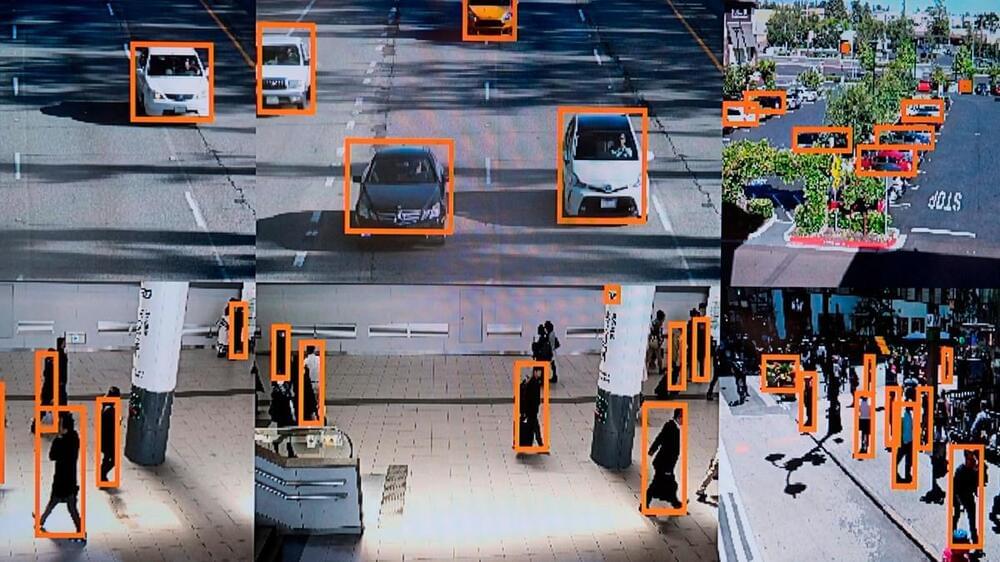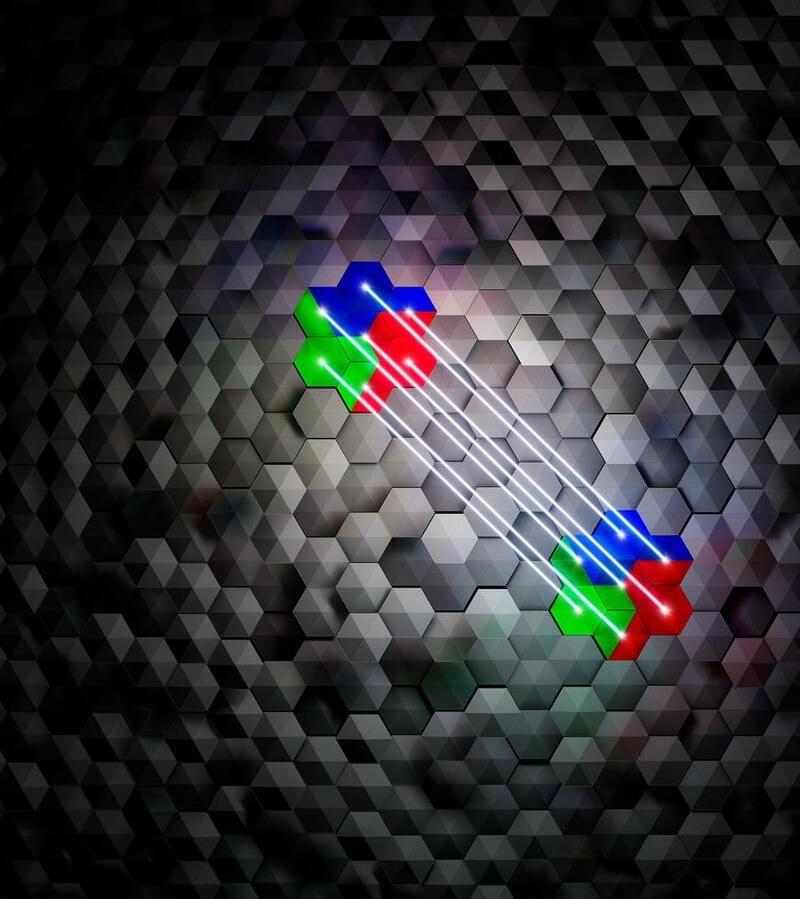
Category: information science – Page 193

What if quantum physics could eradicate illness? | Jim Al-Khalili for Big Think
Can quantum science supercharge genetics? | Jim Al-Khalili for Big Think.
This interview is an episode from The Well, our new publication about ideas that inspire a life well-lived, created with the John Templeton Foundation.
Up next ► Where science fails, according to a physicist https://youtu.be/4hpdKQB2ruc.
Quantum biology examines quantum effects inside cells. This is a tricky field, as physicists are not comfortable working with messy biological systems, while biologists are not comfortable with complex (and seemingly irrelevant) particle physics equations.
But chemists, who straddle the space between physics and biology, know that biological molecules are part of the quantum world.

AI reskilling: A solution to the worker crisis
By 2025, the World Economic Forum estimates that 97 million new jobs may emerge as artificial intelligence (AI) changes the nature of work and influences the new division of labor between humans, machines and algorithms. Specifically in banking, a recent McKinsey survey found that AI technologies could deliver up to $1 trillion of additional value each year. AI is continuing its steady rise and starting to have a sweeping impact on the financial services industry, but its potential is still far from fully realized.
The transformative power of AI is already impacting a range of functions in financial services including risk management, personalization, fraud detection and ESG analytics. The problem is that advances in AI are slowed down by a global shortage of workers with the skills and experience in areas such as deep learning, natural language processing and robotic process automation. So with AI technology opening new opportunities, financial services workers are eager to gain the skills they need in order to leverage AI tools and advance their careers.
Today, 87% of employees consider retraining and upskilling options at workplaces very important, and at the same time, more companies ranked upskilling their workforce as a top-5 business priority now than pre-pandemic. Companies that don’t focus on powering AI training will fall behind in a tight hiring market. Below are some key takeaways for business leaders looking to prioritize reskilling efforts at their organization.


Error-free quantum computing gets real
In modern computers, errors during processing and storage of information have become a rarity due to high-quality fabrication. However, for critical applications, where even single errors can have serious effects, error correction mechanisms based on redundancy of the processed data are still used.
Quantum computers are inherently much more susceptible to disturbances and will thus probably always require error correction mechanisms, because otherwise errors will propagate uncontrolled in the system and information will be lost. Because the fundamental laws of quantum mechanics forbid copying quantum information, redundancy can be achieved by distributing logical quantum information into an entangled state of several physical systems, for example multiple individual atoms.
The team led by Thomas Monz of the Department of Experimental Physics at the University of Innsbruck and Markus Müller of RWTH Aachen University and Forschungszentrum Jülich in Germany has now succeeded for the first time in realizing a set of computational operations on two logical quantum bits that can be used to implement any possible operation. “For a real-world quantum computer, we need a universal set of gates with which we can program all algorithms,” explains Lukas Postler, an experimental physicist from Innsbruck.
Quantifying Biological Age: Blood Test #3 in 2022
Join us on Patreon!
https://www.patreon.com/MichaelLustgartenPhD
Levine’s Biological age calculator is embedded as an Excel file in this link from my website:
An epigenetic biomarker of aging for lifespan and healthspan.
https://pubmed.ncbi.nlm.nih.gov/29676998/
Underlying features of epigenetic aging clocks in vivo and in vitro.
https://pubmed.ncbi.nlm.nih.gov/32930491/
Population Specific Biomarkers of Human Aging: A Big Data Study Using South Korean, Canadian, and Eastern European Patient Populations.
https://pubmed.ncbi.nlm.nih.gov/29340580/

Self-driving microscopes discover shortcuts to new materials
Researchers at the Department of Energy’s Oak Ridge National Laboratory are teaching microscopes to drive discoveries with an intuitive algorithm, developed at the lab’s Center for Nanophase Materials Sciences, that could guide breakthroughs in new materials for energy technologies, sensing and computing.
“There are so many potential materials, some of which we cannot study at all with conventional tools, that need more efficient and systematic approaches to design and synthesize,” said Maxim Ziatdinov of ORNL’s Computational Sciences and Engineering Division and the CNMS. “We can use smart automation to access unexplored materials as well as create a shareable, reproducible path to discoveries that have not previously been possible.”
The approach, published in Nature Machine Intelligence, combines physics and machine learning to automate microscopy experiments designed to study materials’ functional properties at the nanoscale.

You can practice for a job interview with Google AI
Never mind reading generic guides or practicing with friends — Google is betting that algorithms can get you ready for a job interview. The company has launched an Interview Warmup tool that uses AI to help you prepare for interviews across various roles. The site asks typical questions (such as the classic “tell me a bit about yourself”) and analyzes your voiced or typed responses for areas of improvement. You’ll know when you overuse certain words, for instance, or if you need to spend more time talking about a given subject.
Interview Warmup is aimed at Google Career Certificates users hoping to land work, and most of its role-specific questions reflect this. There are general interview questions, though, and Google plans to expand the tool to help more candidates. The feature is currently only available in the US.
AI has increasingly been used in recruitment. To date, though, it has mainly served companies during their selection process, not the potential new hires. This isn’t going to level the playing field, but it might help you brush up on your interview skills.
A Physiology Clock for Human Aging: BP and FEV1 As Top Predictors
Join us on Patreon!
https://www.patreon.com/MichaelLustgartenPhD
Papers referenced in the video:
A Physiology Clock for Human Aging (preprint)
https://www.biorxiv.org/content/10.1101/2022.04.14.488358v1
Predicting Age by Mining Electronic Medical Records with Deep Learning Characterizes Differences between Chronological and Physiological Age.
https://www.ncbi.nlm.nih.gov/pmc/articles/PMC5716867/
Spirometry Reference Equations for Central European Populations from School Age to Old Age.
https://pubmed.ncbi.nlm.nih.gov/23320075/
An Integrated, Multimodal, Digital Health Solution for Chronic Obstructive Pulmonary Disease: Prospective Observational Pilot Study.
https://pubmed.ncbi.nlm.nih.gov/35142291/

Simultaneous broadband image sensing and convolutional processing using van der Waals heterostructures
Efficiently processing broadband signals using convolutional neural networks (CNNs) could enhance the performance of machine learning tools for a wide range of real-time applications, including image recognition, remote sensing and environmental monitoring. However, past studies suggest that performing broadband convolutional processing computations directly in sensors is challenging, particularly when using conventional complementary metal-oxide-semiconductor (CMOS) technology, which underpins the functioning of most existing transistors.
Researchers at Huazhong University of Science and Technology and Nanjing University have recently investigated the possibility of achieving the convolutional processing of broadband signals using an alternative platform, namely van der Waals heterostructures. Their paper, published in Nature Electronics, could ultimately inform the development of better performing image recognition algorithms.
“Our paper was inspired by some our previous research works,” Tianyou Zhai, Xing Zhou and Feng Miao, three of the researchers who carried out the study, told TechXplore. “In studies published in Advanced Materials and Advanced Functional Materials, we realized type-III and type-II band-alignments in different heterostructures. Furthermore, we published a paper in Science Advances, where we realized a reconfigurable neural network vision sensor based on WSe2.”